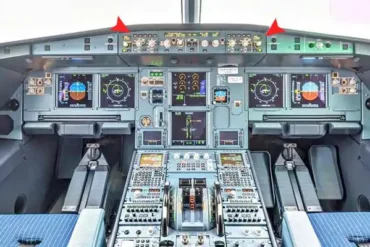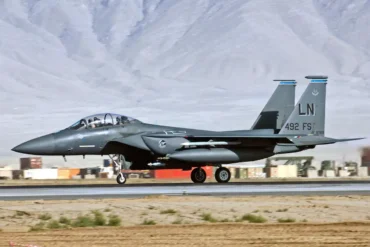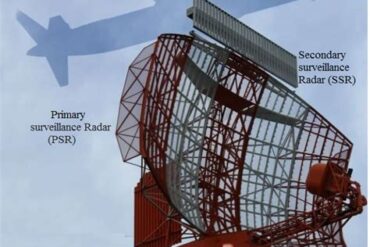Wire strikes are a significant hazard in the aviation industry, particularly for low-flying aircraft such as helicopters and small planes. The presence of power lines, utility cables, and other overhead obstacles poses a substantial risk, often leading to severe damage, fatalities, and costly accidents. In this context, the need for an effective Wire Strike Protection System (WSPS) becomes paramount. A WSPS is designed to mitigate the risk associated with wire strikes, ensuring that aircraft can operate safely even in environments laden with these hidden dangers.
Components of a Wire Strike Protection System
A comprehensive Wire Strike Protection System consists of several key components, each designed to enhance the safety of the aircraft and its occupants. These components include:
1. Upper and Lower Wire Cutters
The upper and lower wire cutters are the primary components of a WSPS. These devices are mounted on the aircraft, typically at the nose and underbelly, and are designed to slice through wires and cables upon impact. Made from high-strength materials, these cutters are sharp and durable, capable of handling the high stresses that occur during a wire strike. The positioning of these cutters ensures that they engage the wire before it can damage the aircraft, thereby preventing catastrophic outcomes.
2. Deflectors
Deflectors work in conjunction with the wire cutters, helping to redirect and guide the wires towards the cutters. They are typically installed along the leading edges of the aircraft’s fuselage, wings, and tail. The deflectors are shaped and angled to maximize the efficiency of the wire cutters, ensuring that the wires are properly aligned for cutting. This system significantly reduces the chances of the wire wrapping around the aircraft or causing structural damage.
3. Wire Strike Warning Systems
Some advanced WSPS installations include wire strike warning systems. These systems utilize sensors and radar technology to detect the presence of wires and other obstacles in the flight path. When a potential hazard is detected, the system alerts the pilot, allowing for corrective action to be taken before a collision occurs. This early warning capability adds an additional layer of safety, particularly in low-visibility conditions or during nighttime operations.
Installation and Maintenance Considerations
Aircraft Compatibility
Not all aircraft are inherently compatible with WSPS installations. The design and structure of the aircraft play a crucial role in determining the feasibility of integrating a WSPS. Aircraft with more exposed flight surfaces or those frequently operating in low-altitude environments are more likely to benefit from a WSPS. Manufacturers typically provide customized solutions to fit various aircraft models, ensuring that the system does not interfere with the aircraft’s aerodynamics or operational capabilities.
Installation Process
The installation of a WSPS requires specialized knowledge and tools. Certified technicians must carry out the installation process to ensure that the system is correctly fitted and aligned. The installation process involves mounting the wire cutters and deflectors in precise locations, ensuring that they do not impede other critical components of the aircraft. Furthermore, the system’s integration with the aircraft’s existing safety and navigation systems must be thoroughly tested to guarantee full functionality.
Maintenance Requirements
Maintaining a WSPS is essential to its long-term effectiveness. Regular inspections are required to check for wear and tear, particularly on the wire cutters and deflectors, which may become dull or damaged over time. Technicians must also verify that the system’s alignment remains correct and that any sensors or warning systems are functioning properly. Routine maintenance should be conducted as part of the aircraft’s overall maintenance schedule to ensure that the WSPS remains in peak operating condition.
Benefits of Wire Strike Protection Systems
Enhanced Safety
The primary benefit of a WSPS is the enhanced safety it provides. By actively mitigating the risk of wire strikes, these systems protect both the aircraft and its occupants. In environments where overhead wires are a common hazard, such as during search and rescue missions, medical evacuations, or military operations, the presence of a WSPS can be the difference between a successful mission and a tragic accident.
Reduced Operational Costs
Wire strikes can lead to costly repairs and lengthy downtime for affected aircraft. By preventing such incidents, a WSPS helps to reduce operational costs significantly. The cost of repairing damage from a wire strike can be substantial, not to mention the potential loss of the aircraft or the cost associated with injuries or fatalities. Investing in a WSPS is therefore not only a matter of safety but also of financial prudence.
Increased Operational Range
Aircraft equipped with a WSPS can operate more freely in environments that would otherwise be considered too hazardous. This increased operational range is particularly beneficial for missions that require flying at low altitudes, such as agricultural spraying, power line inspections, and aerial firefighting. The ability to navigate safely through wire-laden environments opens up new possibilities for aircraft operators, allowing them to take on a wider variety of missions with confidence.
Industry Applications of Wire Strike Protection Systems
Military and Defense Operations
In military and defense operations, low-altitude flying is often necessary for tactical maneuvers, reconnaissance missions, and troop transport. The presence of a WSPS is crucial in these scenarios, where the risk of wire strikes is high. Military helicopters, in particular, benefit from WSPS installations, as they are frequently required to fly low to avoid detection or to land in confined areas. The WSPS ensures that these operations can be conducted with a higher degree of safety, reducing the risk to both personnel and equipment.
Emergency Medical Services (EMS)
EMS helicopters often need to land in uncontrolled environments where power lines and other obstacles may be present. The ability to quickly and safely access these areas can be a matter of life and death. A WSPS provides EMS pilots with the confidence to perform critical landings and takeoffs without the added risk of wire strikes. This capability is particularly important in rural or mountainous regions, where wire hazards may not be immediately visible.
Utility and Infrastructure Inspections
Utility companies and infrastructure maintenance teams frequently utilize aircraft to inspect power lines, pipelines, and other critical infrastructure. These missions often require flying at very low altitudes and in close proximity to the very wires that pose a danger to the aircraft. A WSPS is an invaluable tool in these operations, ensuring that inspections can be carried out safely and efficiently. By protecting the aircraft from wire strikes, the WSPS also helps to maintain the continuity of critical services, preventing disruptions that could arise from aircraft downtime.
Conclusion: The Importance of Wire Strike Protection Systems
In summary, a Wire Strike Protection System is an essential safety feature for any aircraft operating in environments where wire strikes are a risk. With components such as wire cutters, deflectors, and warning systems, a WSPS provides a robust defense against one of the most common hazards in low-altitude flight. The benefits of installing a WSPS extend beyond safety, offering operational cost savings and increased mission flexibility. Whether for military operations, emergency medical services, or utility inspections, a WSPS is a critical investment in the safety and effectiveness of aviation operations.







